Contact us
Websites
TUNNEL PAINTING
TUNNEL CLEANING
ACOUSTIC PANEL CLEANING
|
|
Contact us Websites TUNNEL PAINTING TUNNEL CLEANING ACOUSTIC PANEL CLEANING |
|||
|
|
|
|
|
||
|
|
|||||
|
|
|||||
|
|
|||||
|
|
|||||
|
|
|||||
| In this section: | |||||||||
| - Tempera cycle | |||||||||
| - Acrylic cycle | |||||||||
| - Epoxy-acrylic cycle | |||||||||
| - Epoxy "ceramic coated" cycle | |||||||||
| - Polyurethane cycle | |||||||||
| - Epoxy-siloxan cycle | |||||||||
| - Photocatalitic cycle | |||||||||
|
|
|||||||||
| Tempera cycle |
|
||||||||
| Working cycle | Method | ||||||||
| - Simple washing with nozzles to remove smog dust and incoherent parts; | - Limited water consumption (max 1 l/m²) to avoid water stagnation on the roadway; | ||||||||
| - Supply of paint with calcium carbonate and vinilic resin water soluble, as in technical document of Autostrade per l'Italia Spa, Tangenziale di Napoli Spa, Strada dei Parchi Spa, applied in two coats or until total coverage. Includes the horizontal separation line realization; | - Cleaning and/or
protection of roadway pavement and of existent horizontal and vertical
road signs; |
||||||||
| |
NOTE FOR RECENT COSTRUCTED TUNNELS The cycle mentioned above need to be anticipated with the application of two coats of primer with vynil resin, having molecule five times smaller than normal resin. |
||||||||
| - To employ in almost the all the tunnels having very rough surfaces, humid and with water seepage. Tempera if applied in huge quantities (1/2 kg for squared meter more or less, with two coats) covers all the irregularity, sticks easily on all the surfaces and has a silky soft aspect, opaque and soothing for drivers’ eyes; | |||||||||
|
|
|||||||||
| - On surfaces already painted with acrylic or superior paints; | |||||||||
| Articles & Analysis (only Italian) | |||||||||
| - Strade &
Autostrade
n.74 - 2- Marzo/Aprile 2009 "I cicli di verniciatura" |
|||||||||
| Images | |||||||||
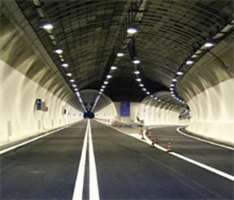
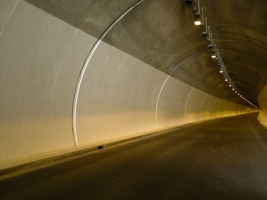 |
|||||||||
|
|
|||||||||
| Acrylic cycle |
|
||||||||
| Working cycle | Method | ||||||||
| - Simple washing with nozzles to remove smog dust and incoherent parts; (or rotolavaggio depending on surface conditions); | - Limited water consumption (max 1 l/m²)
to avoid water stagnation on the roadway; |
||||||||
| - Supply and application of paint with acrylic resins base water soluble, applied with two coats or until total coverage. Includes the horizontal separation line realization; | - Cleaning and/or protection of roadway
pavement and of existent horizontal and vertical road signs; |
||||||||
| |
NOTE FOR RECENT CONSTRUCTED TUNNELS The cycle mentioned above need to be anticipated with the application of two coats of primer with vynil resin, having molecule five times smaller than normal resin. |
||||||||
| - Medium expensive cycle to apply to
already painted surfaces (with varnish) or new. Suitable for tunnels
having good finishing, without humidity or water seepages. Cycle resistant to many rotolavaggio; hard aspect that highlights surface irregularities, color to choose between RAL 9010 - RAL 2002 ; |
|||||||||
|
|
|||||||||
| - On surfaces already painted with tempera; | |||||||||
| - On surfaces already painted with epoxy- acrylic o superior paints; | |||||||||
| Articles & Analysis (only Italian) | |||||||||
| - Strade &
Autostrade
n.74 - 2- Marzo/Aprile 2009 "I cicli di verniciatura" |
|||||||||
| Images | |||||||||
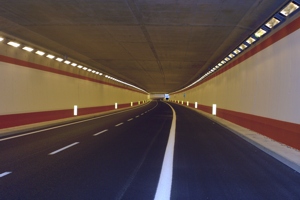
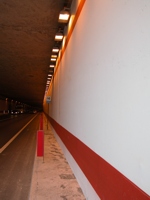 |
|
||||||||
|
|
|||||||||
| Epoxy-acrylic cycle |
|
||||||||
| Working cycle | Method | ||||||||
| - Simple washing with nozzles to remove smog dust and incoherent parts (or rotolavaggio depending on surface conditions); | - Limited water
consumption (max 1 l/m²) to avoid water stagnation on the roadway; |
||||||||
| - Supply and
application of paint with epoxy- acrylic resins base water soluble,
applied with two coats until rich final gauge of 0,25mm or 0,35mm. Includes the horizontal separation line realization; |
- Cleaning and/or
protection of roadway pavement and of existent horizontal and vertical
road signs; |
||||||||
| |
|||||||||
| - Great cycle, but expensive, to be applied on surfaces already painted with an epoxy- acrylic product or new. Suitable for tunnels having a perfect finishing (like house walls) and without humidity or water seepages. This cycle is resistant to many rotolavaggio. Aspect “very hard” that highlights all surface irregularities; color to choose between RAL 9010 - RAL 2002; | NOTE FOR RECENT CONSTRUCTED TUNNELS The cycle mentioned above need to be anticipated with the application of two coats of primer with vynil resin, having molecule five times smaller than normal resin. |
||||||||
|
|
|||||||||
| - On surfaces painted with “poor products” like tempera and low quality acrylics; | |||||||||
| Articles & Analysis (only Italian) | |||||||||
| - Strade &
Autostrade
n.74 - 2- Marzo/Aprile 2009 "I cicli di verniciatura" |
|||||||||
| Images | |||||||||
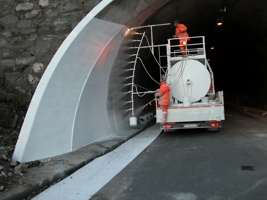
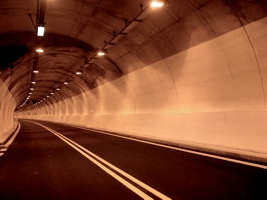 |
|||||||||
|
|
|||||||||
| Epoxy “ceramic coated” cycle/ polyurethane cycle |
|
||||||||
| Working cycle | Method | ||||||||
| - Accurate surfaces’ Rotolavaggio to remove smog dust and oil residuals, incoherent parts from the frame; | - Limited water
consumption (max 1 l/m²) to avoid water stagnation on the roadway; |
||||||||
| - Supply and
application of epoxy/ polyurethane paint, applied with two coats until
rich final gauge of 0,25mm or 0,35mm. Includes the horizontal separation line realization; |
- Cleaning and/or
protection of roadway pavement and of existent horizontal and vertical
road signs; |
||||||||
| |
|||||||||
| - Great cycle, but expensive .To apply only on new surfaces and with a better finishing than house walls. Suitable for tunnel with perfect finishing, without humidity or water seepages. This cycle is resistant to many rotolavaggio. Aspect “very very hard” that highlights all surface irregularities; color to choose between RAL 9010 - RAL 2002; | |||||||||
|
|
|||||||||
| - On surfaces painted with “poor products” like tempera and low quality acrylics and epoxy- acrylic; | |||||||||
| Articles & Analysis (only Italian) | |||||||||
| - Strade &
Autostrade
n.74 - 2- Marzo/Aprile 2009 "I cicli di verniciatura" |
|||||||||
| Images | |||||||||
|
|
|||||||||
|
|
|||||||||
| Epoxy-siloxane cycle |
|
||||||||
| Working cycle | Method | ||||||||
| - Accurate surfaces’ Rotolavaggio to remove smog dust and oil residuals, incoherent parts from the frame; | - Limited water
consumption (max 1 l/m²) to avoid water stagnation on the roadway; |
||||||||
| - Supply and application of mono-element acrylic paint+ one coat of epoxy- siloxane varnish, as specified in ANAS technical document item H.05.030. Includes the horizontal separation line realization; | - Cleaning and/or
protection of roadway pavement and of existent horizontal and vertical
road signs; |
||||||||
| |
|||||||||
| - Great cycle, but
expensive .To apply only on new surfaces and with a better finishing
than house walls. Suitable for tunnel with perfect finishing, without humidity or water seepages. This cycle is resistant to many rotolavaggio. Aspect “very very hard” that highlights all surface irregularities; color to choose between RAL 9010 - RAL 2002; |
|||||||||
| - In tunnels with high vehicles traffic this product guarantees a durable cleanliness even with a simple pressure washing; | |||||||||
|
|
|||||||||
| - On surfaces painted with “poor products” like tempera and low quality acrylics and epoxy- acrylic; | |||||||||
| Articles & Analysis (only Italian) | |||||||||
| - Strade &
Autostrade
n.74 - 2- Marzo/Aprile 2009 "I cicli di verniciatura" |
|||||||||
| Images | |||||||||
|
|
|||||||||
|
|
|||||||||
| Photocatalitic Cycle | |||||||||
| Working cycle | Method | ||||||||
| - Supply and application of photocathalitic paint based on nanotechnological titanium dioxide with max gauge of 0,100mm. Includes the horizontal separation line realization; | - Cleaning and/or
protection of roadway pavement and of existent horizontal and vertical
road signs; |
||||||||
| |
|||||||||
| - More than a painting cycle this is a finishing, applicable on surface already painted with epoxy- acrylic, epoxy, poliurethhanic and epoxy- siloxan varnish: ultraviolet rays action activate the photocatalitic reaction that convert the smog into Co2; | |||||||||
|
|
|||||||||
| Articles & Analysis (only Italian) | |||||||||
| - Strade &
Autostrade
n.74 - 2- Marzo/Aprile 2009 "I cicli di verniciatura" |
|||||||||
| Images | |||||||||
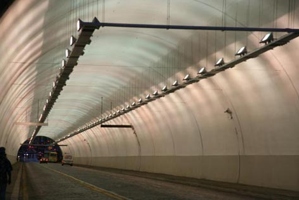
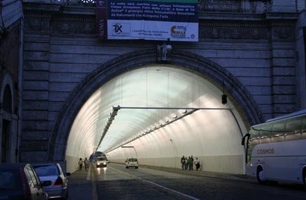 |
|||||||||
| Home page | Social | |||
| Services |


 |
|||
| Contact us | ||||
| Brochure | ||||
|
|
||||